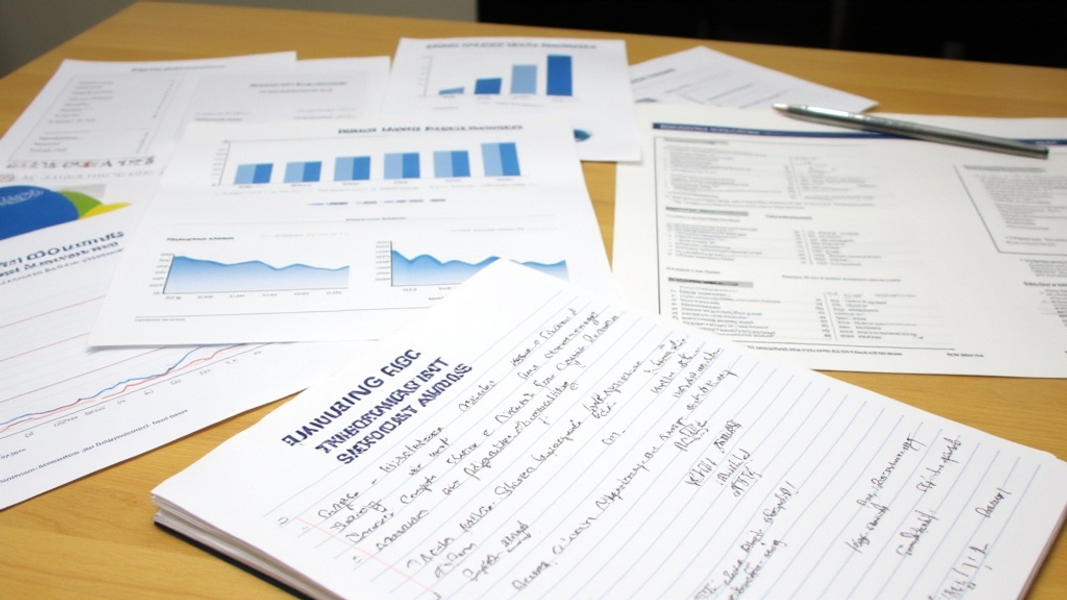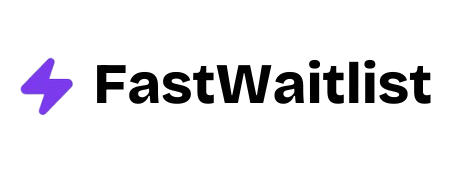
Landing pages are the secret weapon of successful online businesses. These powerful tools can turn casual visitors into loyal customers with just a single click. If you're not using landing pages, you're missing out on a huge opportunity to grow your business. This guide will show you everything you need to know about landing pages and how to use them effectively.
What is a Landing Page?
A landing page is a special webpage designed to get visitors to take one specific action. Unlike regular website pages, landing pages have a single goal: to convert visitors into leads or customers.
The Purpose of Landing Pages
The main job of a landing page is to convince people to do something. This could be:
- Signing up for an email list
- Buying a product
- Downloading an ebook
- Registering for a webinar
Landing pages are focused on this one task. They don't have distractions like menus or links to other parts of your website. Everything on the page is there to help visitors take that one important step.
How Landing Pages Differ from Homepages
Your homepage is like the front door of your online business. It welcomes visitors and shows them all the different things you offer. A landing page, on the other hand, is more like a salesperson who's laser-focused on one product or service.
Here's a quick comparison:
| Homepage | Landing Page |
|---|---|
| Many links and options | One clear call-to-action |
| Broad overview of your business | Focused on a single offer |
| Designed for browsing | Designed for converting |
Key Elements of an Effective Landing Page
To make a landing page that works, you need these important parts:
- A clear, eye-catching headline
- Persuasive copy that explains the benefits
- A strong call-to-action (CTA) button
- Relevant images or videos
- Trust-building elements like testimonials
- A simple form to collect information (for lead generation pages)
Each of these elements works together to guide visitors towards taking action. The headline grabs attention, the copy builds interest, and the CTA seals the deal.
Types of Landing Pages
Not all landing pages are the same. Different goals call for different types of pages. Let's look at the main kinds you'll see.
1. Lead Generation Landing Pages
Lead generation pages are all about collecting contact information. They offer something valuable in exchange for a visitor's email address or other details. This could be an ebook, a free trial, or access to exclusive content.
These pages usually have a form front and center. The form asks for just enough information to follow up with the lead later. A good lead generation page makes it clear what the visitor will get and why it's worth sharing their information.
Example: HubSpot often uses lead generation landing pages to offer free marketing resources. They might have a page offering a free ebook on "10 Ways to Improve Your Email Marketing" in exchange for your name and email address.
2. Click-Through Landing Pages
Click-through pages are stepping stones in the buying process. They warm up visitors before sending them to a purchase page. These pages give more details about a product or service and build excitement.
The goal of a click-through page is to get visitors to click a button that takes them to the next step in the sales process. These pages often have more information than other types of landing pages because they're preparing visitors to make a purchase decision.
Example: Spotify uses click-through pages to promote their Premium subscription. The page explains the benefits of upgrading and has a prominent "Get Started" button that leads to the sign-up process.
3. Sales Pages
Sales pages are the closers of the landing page world. Their job is to convince visitors to buy right then and there. These pages can be short and punchy for simple products, or long and detailed for more complex or expensive offers.
A good sales page tells a compelling story about the product. It highlights benefits, answers common questions, and overcomes objections. The page ends with a clear call to purchase, often with a sense of urgency or scarcity to encourage immediate action.
Example: Shopify has sales pages aimed at new merchants. These pages explain how Shopify can help start and grow an online business, with a prominent "Start free trial" button to convert visitors into customers.
Key Components of a High-Converting Landing Page
Now that we know the types of landing pages, let's dig into what makes them work. These are the building blocks of a page that turns visitors into leads and customers.
Compelling Headline and Subheadline
Your headline is the first thing visitors see. It needs to grab attention and make people want to learn more. A good headline:
- Clearly states the main benefit
- Uses powerful words that spark interest
- Is short and easy to understand
The subheadline supports the main headline. It gives a bit more information and keeps visitors reading. Together, they should tell visitors exactly what they'll get and why they should care.
Clear and Concise Copy
The words on your landing page need to do a lot of work. They have to explain your offer, highlight benefits, and convince visitors to take action. Good landing page copy is:
- Easy to read and understand
- Focused on benefits, not just features
- Broken up into short paragraphs and bullet points
Remember, you're not writing a novel. Keep your sentences short and your points clear. Use language that your target audience will easily understand and relate to.
Strong Call-to-Action (CTA)
Your CTA is where all the elements of your page come together. It's the button or link that visitors click to take the desired action. A strong CTA:
- Stands out visually from the rest of the page
- Uses action-oriented words ("Get", "Start", "Join")
- Creates a sense of urgency or excitement
The wording of your CTA should be specific to what the visitor will get. "Download Your Free Guide" is better than just "Submit".
Relevant Images or Videos
Visual elements can make your landing page more engaging and help explain your offer. They can show your product in action, illustrate key benefits, or create an emotional connection. When choosing images or videos:
- Make sure they're high-quality and professional-looking
- Choose visuals that support your message
- Avoid stock photos that look fake or cheesy
A well-chosen image can say more than paragraphs of text. Use visuals strategically to reinforce your main points and make your page more appealing.

Social Proof Elements
People trust other people more than they trust companies. That's why social proof is so important on landing pages. This can include:
- Customer testimonials
- Trust badges from well-known brands
- Numbers showing how many happy customers you have
These elements build credibility and show visitors that others have benefited from your offer. They can be the tipping point that convinces someone to take action.
Lead Capture Form
For lead generation pages, the form is crucial. It's where visitors enter their information to get your offer. A good lead capture form:
- Asks for only the essential information
- Has clear, descriptive labels for each field
- Is easy to use on both desktop and mobile devices
The key is to balance your need for information with the visitor's desire for a quick and easy process. Ask for too much, and people might not bother filling it out.
Best Practices for Creating Effective Landing Pages
Creating a landing page that converts takes more than just throwing together some elements. Here are some best practices to make your pages as effective as possible.
Keep it Focused on a Single Goal
Every element on your landing page should support your main goal. If something doesn't directly help convince visitors to take action, it probably doesn't belong. This means:
- Removing navigation menus that could lead visitors away
- Limiting the number of links on the page
- Having only one main call-to-action
By keeping your page focused, you make it easier for visitors to make a decision. They're not distracted by other options or information.
Ensure Message Match with Ads
If someone clicks on an ad or link to get to your landing page, make sure the page matches what they were expecting. This "message match" is crucial for keeping visitors engaged. Your landing page should:
- Use similar language to the ad or link that brought them there
- Deliver on the promise made in the ad
- Have a consistent look and feel with your other marketing materials
When visitors see that the page matches what they clicked on, they're more likely to trust your offer and keep reading.
Use Persuasive Copywriting Techniques
The words on your landing page need to convince visitors to take action. Some effective copywriting techniques include:
- Using "you" and "your" to speak directly to the reader
- Telling a story that resonates with your audience
- Highlighting the pain points your offer solves
- Using power words that trigger emotions
Good copywriting guides the reader through the page, building interest and desire until they're ready to click that CTA button.
Optimize for Mobile Devices
More and more people are browsing the web on their phones and tablets. Your landing page needs to look good and work well on all devices. This means:
- Using a responsive design that adjusts to different screen sizes
- Making buttons and forms easy to use on touchscreens
- Keeping load times fast, even on mobile connections
A page that's hard to use on mobile will lose a big chunk of potential conversions. Test your page on various devices to make sure it works well for everyone.
Implement A/B Testing
The best way to improve your landing pages is to test different versions. A/B testing lets you compare two versions of a page to see which one performs better. You might test:
- Different headlines or copy
- Various images or videos
- Changes to the layout or design
- Different CTAs or button colors
By constantly testing and improving, you can make your landing pages more effective over time. Tools like Google Optimize can help you set up and run these tests.
Minimize Distractions and Exit Points
Every link or button that doesn't lead to your main goal is a potential distraction. To keep visitors focused:
- Remove or minimize navigation menus
- Limit the number of external links
- Consider removing sidebars or footers
The idea is to create a "closed" environment where the only real option is to engage with your offer.

Common Landing Page Mistakes to Avoid
Even with best practices in mind, it's easy to make mistakes when creating landing pages. Here are some common pitfalls to watch out for:
Too Much Clutter or Information Overload
It's tempting to cram everything about your offer onto the page. But too much information can overwhelm visitors and make them leave. Keep your content focused and scannable. Use bullet points, short paragraphs, and clear headings to make it easy to digest.
Weak or Unclear Call-to-Action
Your CTA is the most important element on the page. If it's not clear what visitors should do next, they probably won't do anything. Make your CTA stand out visually and use strong, action-oriented language that leaves no doubt about what will happen when they click.
Slow Loading Speed
In today's fast-paced world, people won't wait around for a slow page to load. Even a few seconds of delay can dramatically reduce your conversion rate. Optimize your images, minimize code, and use a reliable hosting service to keep your pages loading quickly.
Lack of Trust Elements
If visitors don't trust you, they won't convert. Make sure to include elements that build credibility, like customer testimonials, security badges, and clear contact information. Being transparent about who you are and what you're offering goes a long way in building trust.
Poor Mobile Optimization
With more people browsing on mobile devices than ever before, a page that doesn't work well on phones is a huge missed opportunity. Test your pages on various devices and screen sizes to ensure a smooth experience for all visitors.
Measuring Landing Page Performance
Creating a great landing page is only half the battle. To really succeed, you need to track how well your pages are performing and make improvements based on data.
Key Metrics to Track
Some important metrics to keep an eye on include:
- Conversion rate: The percentage of visitors who take the desired action
- Bounce rate: How many people leave without interacting with the page
- Time on page: How long visitors spend reading your content
- Click-through rate: For click-through pages, how many people click to the next step
These metrics give you a picture of how well your page is engaging visitors and moving them towards your goal.
Tools for Analyzing Landing Page Performance
There are many tools available to help you track and analyze your landing page performance. Some popular options include:
- Google Analytics: For overall traffic and behavior data
- Hotjar: For heatmaps and user recordings
- Unbounce: For building and testing landing pages
These tools can provide valuable insights into how visitors interact with your pages and where you might need to make improvements.
Using Data to Improve Your Landing Pages
Once you have data on how your pages are performing, you can make informed decisions about how to improve them. This might involve:
- Tweaking your headline or copy based on what resonates with visitors
- Adjusting your form fields if you're seeing a lot of drop-offs
- Changing your CTA if click-through rates are low
- Improving page speed if you notice high bounce rates on mobile
Remember, improving your landing pages is an ongoing process. Keep testing, analyzing, and refining to get the best results.
Frequently Asked Questions
How long should my landing page be?
The length of your landing page depends on your offer and your audience. For simple offers or when your audience is already familiar with your brand, a shorter page might work best. For more complex or expensive products, a longer page that addresses more questions and objections could be more effective. The key is to include enough information to convince visitors to take action, without overwhelming them.
Can I use the same landing page for different campaigns?
While it's possible to use the same landing page for multiple campaigns, it's generally not recommended. Each campaign likely has a specific audience and goal, and your landing page should be tailored to match. Creating unique pages for each campaign allows you to ensure message match and maximize relevance for your visitors.
How often should I update my landing pages?
Landing pages should be updated regularly based on performance data and changes in your offer or market. At a minimum, review your pages quarterly to ensure all information is current and accurate. If you're running ongoing tests, you might be making small tweaks more frequently. Major redesigns might happen less often, perhaps annually or when launching new products or campaigns.
What's the best way to drive traffic to my landing pages?
There are many ways to drive traffic to your landing pages, including:
- Paid advertising (Google Ads, social media ads)
- Email marketing campaigns
- Social media posts
- Content marketing (blog posts, videos)
- Partnerships or affiliates
The best method depends on your target audience and where they spend their time online. Often, a mix of different traffic sources works best to reach a wide audience.
How do I know if my landing page is successful?
Success depends on your specific goals, but generally, a successful landing page has:
- A high conversion rate compared to industry benchmarks
- A low bounce rate
- Positive ROI on any ad spend driving traffic to the page
- Steady improvement in key metrics over time
Remember to set clear goals for your landing pages before launching, so you have a benchmark to measure success against.
Landing pages are powerful tools for growing your business online. By following these best practices and continually improving your pages based on data, you can create landing pages that effectively turn visitors into leads and customers. Start applying these principles to your own landing pages, and watch your conversion rates soar!
